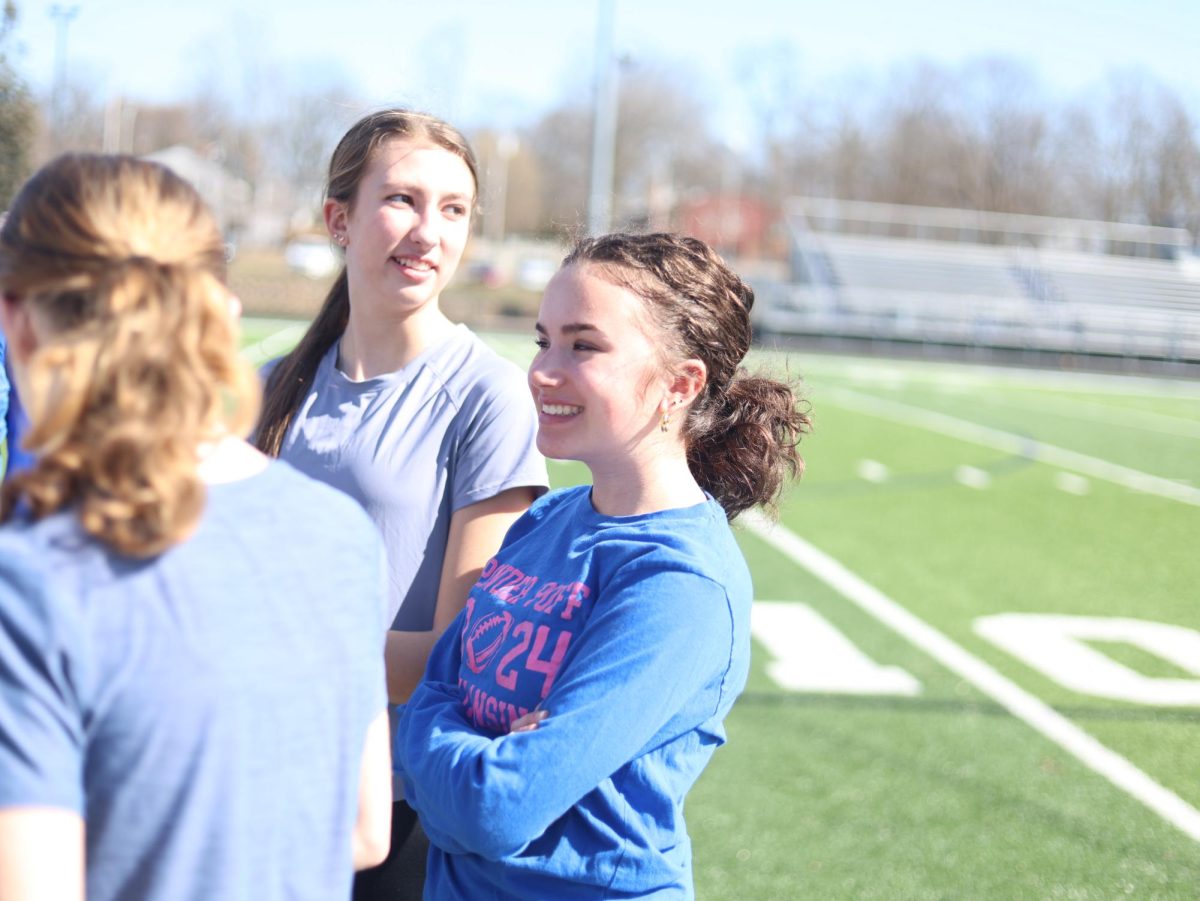As fluorescent fall leaves morph into striking spring flowers, the surface beneath runners’ feet changes as well. Dirt, gravel, and grass shifts into standardized rubber. Hilly terrain turns into a uniform loop, and 3.1 mile races diverge into 400, 800, 1600, and 3200 meter dashes. Cross country turns into track.
Track
Long distance runner Madeleine Plowright (11) has mixed feelings about which sport she prefers, but generally favors track over cross country.
“When I’m doing cross, I prefer track, but when I do track, I prefer cross,” Plowright said. “But in the end, I would say I prefer track, just because I like the end of school year vibes more, and I like being able to race on a track [so I can] compare my times more accurately.”
While both sports have similarities, Plowright recognizes the difference in team dynamics between track and cross country.
“Cross country is definitely a lot closer, just because it’s smaller than track and we all run the same event, so we do a lot of things together,” Plowright said. “We’re all really close, especially at school, like we’ll always help each other out.”
Kathy Hubbard, the girls coach for both track and cross country, attributes the stronger bond to a multitude of reasons including the length of meets and the variety of events.
“Distance runners tend to create a strong family environment amongst themselves in both sports but it sometimes harder to sustain that family feeling across all events in track,” Hubbard said. “Since a cross country meet is usually only 2-3 races, the team members stay and support all races. During track, it is harder to keep athletes at the entire meet due to the length of time at the meet.”
Cross Country
For Emily Barrie (9), the change of view from plastic turf to real grass, and high school football stadiums to forested landscapes is the deciding factor in whether she prefers track or cross country.
“It’s more fun, and the energy and environment is much more enjoyable,” Barrie said. “Plus, you have an actual destination and there’s better scenery.”
Like Plowright, Barrie also recognizes how the difference in team closeness can affect one’s view of the sport.
“With cross, it’s more of a collective team environment,” Barrie said. “But with track, because everything’s so split up with separate events, it’s more like you have different groups, but not one collective team.”
Dalia Fermaglich (9) grew up running with her family, so she has experienced the environment of both sports. Though she enjoys both, she prefers cross country because of the variety it provides.
“Everyone’s together in cross country, plus it’s really scenic,” Fermaglich said. “You can run in different places instead of running around the track a bunch of times.”
Liam Preisser (11) favors running cross country over track as well. But for him, the main appeal is the calmer environment that allows him to focus on running.
“I feel like track is a lot less serious because you’re doing all these races,” Preisser said. “And there’s so much going on during a track meet that it’s just a lot more frantic than a cross country race.”
While she coaches both cross country and track, Hubbard has a soft spot for cross country.
“I enjoy the variety of events in track and watching the different athletes, but my love has always been cross country,” Hubbard said. “Cross country allows for more time to think, strategize, and overcome your mental blocks. You don’t have to keep track of what lap you are on or watch the front person hit the curve before you, you just have to follow the course, try to catch the next person in front of you, and become mentally stronger every race.”




